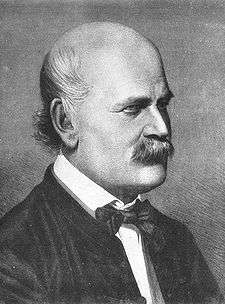Hungarian culture
Hungarian culture is the culture of Hungarians ("magyarok", Magyars) by meaning of the cultural universals in the world from around 884 AD [1][2] to the 21st century.

Games
Traditional toys are made from various plants, for example juglans (dió), nuts (mogyoró) or maize. "Erre csörög a dió, arra meg a mogyoró" is one of the most famous Magyar children's games.
Ulti is one of the most famous card games played by a 32-card set so-called: "Magyar kártya", exactly: "Tell-Karte" with German decks.
Button football is a tabletop game which is known in Europe, typically in Hungary.
Art
The basis of the Hungarian culture is the Hungarian folk art. The oldest Hungarian artistic memories came from folk music, folk tale, folk dance & folk poetry.
Hungarian art music
Ancient Hungarian folk songs use pentatonic scales.
The first notable Hungarian composer was Bálint Bakfark. Art music is the most famous part of the Hungarian culture, composers are the most famous Hungarian artists in the world, e. g. Franz Liszt, Béla Bartók & György Ligeti.
 |
Franz Liszt
|
| Problems playing this file? See media help. | |
Franz Liszt, in Hungarian: Liszt Ferenc was born in Austria and didn't speak Hungarian, but both in words and works he clearly identified himself as Hungarian, founded the Academy of Music and give the name of the BUD/LHBP, the Liszt Ferenc International Airport. Bartók was born in the former Hungarian Kingdom and György Ligeti also was born in Transylvania, Romania, they both studied in the Liszt Academy then lived and worked outside of the Pannonian Basin.
Art movies
Hungarians were major pioneers in cinema both in Europe (e.g. Alexander Korda) & in the United States and they have entered to the formation of the art movie.
István Szőts People of the Mountains won the Venice Biennale in 1942, then Géza Radványi Somewhere in Europe influenced the emerging neorealism.
After World War II the greatest Hungarian film director was Miklós Jancsó who won the first 2 international film prizes:
- The Round Up (Szegénylegények), Locarno, FIPRESCI, 1965
- Red Psalm ("Még kér a nép" Sándor Petőfi), Cannes, Best Director Award, 1971
Science and Technology
Medicine
- Ignaz Semmelweis, called the savior of mothers, invented antiseptic procedures in 1851
- Albert Szent-Györgyi isolated vitamin C around 1930
- András Pető invented conductive education
Mathematics
- János Bolyai was one of the founders of non-Euclidean geometry
- John von Neumann (born Neumann János) was a pure and applied mathematician, physicist, inventor, polymath, and polyglot
- Paul Erdős was one of the most prolific mathematicians of the 20th century
References
- ↑ Anonymus, Notary of King Béla I: The Deeds of the Hungarians (ch. 7), p. 21.
- ↑ Kristó 1996, p. 93.
General sources
| Wikimedia Commons has media related to Hungarian culture. |

.jpg)

